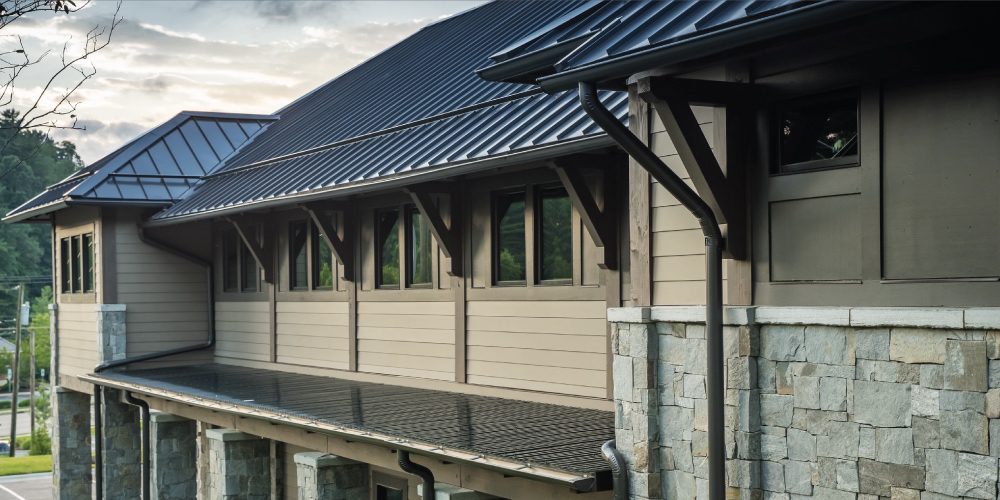Among owners of commercial properties — especially those who hope to sell eventually — there’s one thing feared above all else: depreciation.
While depreciation can cause severe issues, there are plenty of measures business owners can take to prevent it from happening or reverse it if the process has already begun. Regularly maintaining and updating your property can help to combat depreciation.
To better equip you against it, it’s important to learn what causes commercial property depreciation in the first place.
What Causes Commercial Property Depreciation?
Depreciation in the value of your commercial property can happen for a wide variety of reasons, many of which aren’t always within your control. While the full list of reasons may go on forever, there’s a handful of measurable ones that make up the most common factors we see in the market today. Here are a few of them:
Physical Deterioration
The first reason for commercial property depreciation is physical deterioration — in other words, normal wear and tear. Over time, even sturdy buildings will begin to show their age. The buildup of minor flaws like cracks, water damage, and rust can all impact the value of a property, as potential buyers or tenants might be turned off by the idea of additional maintenance costs to bring a location back up to standard.
To combat this, regular maintenance and some TLC can help. Hiring a custom builder to restore and maintain your property can help prevent or minimize depreciation from happening and will save you money in the long run.
Obsolescence
Another reason a commercial property might depreciate is obsolescence. This means a place or thing is no longer as relevant or desirable to modern users as it may have once been. This can be avoided by keeping meticulously up-to-date with customer needs and expectations.
Obsolescence can happen for a number of reasons: maybe the layout of the property no longer meets the needs of the industry, or perhaps the design is no longer appealing to its customers.
As time passes, people change. Think about a shopping mall that lacks the things today’s shoppers take for granted, like ample parking, wheelchair accessibility, or modern technology infrastructure. These days, those kinds of amenities are considered essential. Virtually every building will someday require an update in order to combat commercial property depreciation.
Environmental Factors
The environment can also play a role in commercial property depreciation. Any exposure — even minor — to the elements, over time, can result in a bit of natural deterioration. Larger events like natural disasters such as storms, floods, and hurricanes can cause significant damage to buildings beyond standard wear and tear.
Sometimes it’s not only the damage that has an effect on commercial property depreciation.
Often, an area that has shown to be at risk for dangers like hurricanes or floods can fall out of favor in the eyes of potential buyers. Similarly, properties in areas with high levels of pollution, crime, or noise might also struggle to maintain desirable market value.
Weatherproofing, while not a cure-all, is a great way to slow the progress of depreciation. Understanding the environmental needs of your property can help you plan ahead for any unforeseen circumstances.
Economic Factors
As is the case with any topic related to markets and money, there are plenty of economic factors that can affect commercial property depreciation. During an economic recession, for example, you might see the demand for commercial real estate plummet as businesses look to cut back on expenses. Changes in interest rates can also impact the affordability of mortgages, potentially leading to lower demand and property values.
In the same way, market factors such as supply and demand can also impact the value of a commercial property. If there’s an abundance of commercial properties in an area, competition for tenants or buyers may be intense, leading to decreased rental rates or sales prices. On the flip side, if demand for commercial properties is high, property values may rise instead.
No one can say for sure how a market will turn, but it is safe to update your property to appeal to all kinds of buyers, ensuring you float in a market flood.
Legal Factors
Legal factors can make a huge impact on commercial property depreciation in their area of influence. For example, changes in zoning laws or new regulations may add unforeseen complications to the use or development of a property, making it a more expensive investment. This, in turn, can make it a less appealing option to potential buyers.
Similarly, alterations in local tax laws may increase the cost of ownership, making the property less attractive to investors regardless of whether the location is old or new. Though little can be done on the ground level about laws and regulations, the chances of appreciation are always improved by keeping a facility clean, up-to-date, and visually pleasing.
Fight Commercial Property Depreciation the Old Fashioned Way
Though commercial property depreciation is inconvenient, there are a surprising number of ways to combat it. One of the best things to do for a commercial property that is facing depreciation now or in the near future is to undertake renovations.
Consider the parts of your facility that have become deteriorated, outdated, or taken damage that hasn’t yet been repaired. These are areas that may warrant a custom renovation. Likewise, try to stay up to date on trends, weather factors, and the economic climate when preventing commercial property depreciation.
Hiring a custom contractor like VPC Builders can do wonders for ensuring the value of your property remains high or even increases.
If you need some professional help with your renovation efforts, contact VPC Builders for some much-needed advice on making your commercial property shine like new. Your wallet will thank you.
Need to know more about commercial property depreciation? Contact VPC Builders today.

